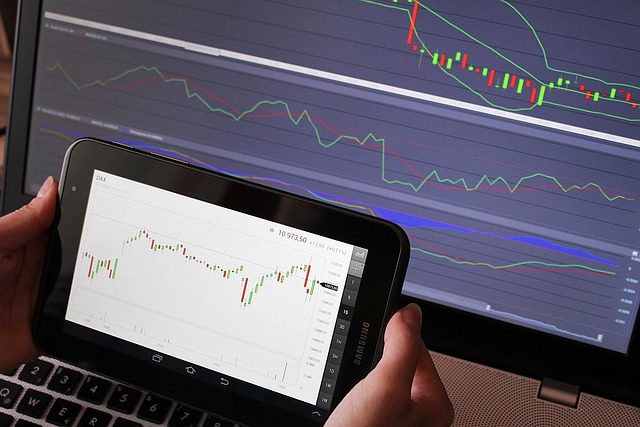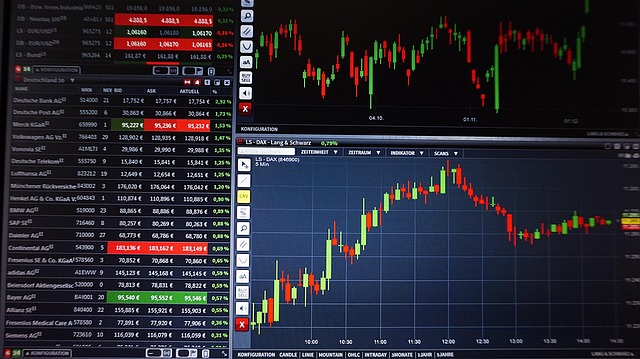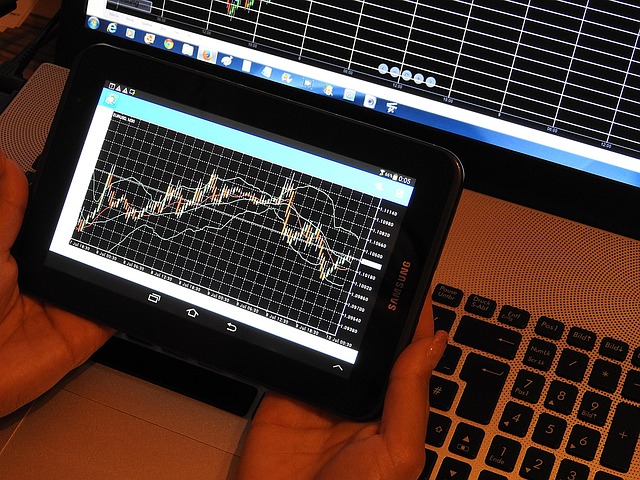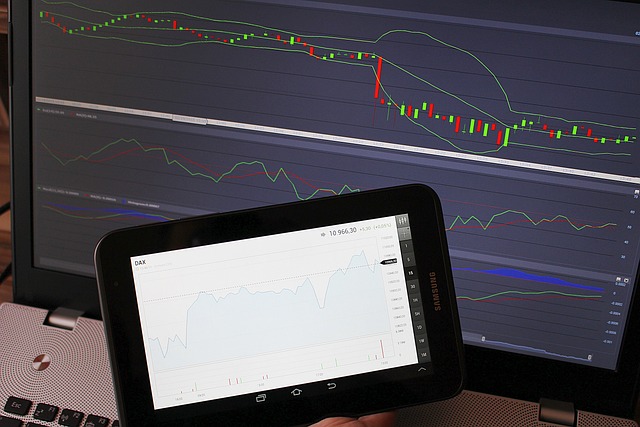Copy Trading Meaning in Forex 2025: Complete Guide
Author: Jameson Richman Expert
Published On: 2025-10-23
Prepared by Jameson Richman and our team of experts with over a decade of experience in cryptocurrency and digital asset analysis. Learn more about us.
Copy trading meaning in forex refers to the practice where an investor automatically replicates the trades of another (usually more experienced) trader in the foreign exchange market. This article explains that concept in depth, shows how copy trading works in 2025, compares platform types, discusses risks and fees, provides step-by-step setup advice, and lists best practices and metrics to evaluate strategy performance. Read on for actionable examples, regulatory considerations, and recommended next steps — including platforms you can explore today.

What is Copy Trading? A Clear Definition
Copy trading is a form of social trading that allows one account (the follower) to automatically mirror the trades executed in another account (the leader) in real time. In forex, this means when the leader opens or closes currency pair positions, the follower’s account executes those same actions proportionally. The goal is to benefit from the leader’s expertise without manually analyzing the market.
Copy trading differs from simply receiving trade signals: with copy trading the execution is automatic and usually proportional to the follower’s capital allocation. It also differs from algorithmic trading because the trading decisions originate from a human trader rather than a standalone script.
How Copy Trading Works in Forex
At a high level, copy trading platforms connect leader accounts to follower accounts through an API or a unified brokerage environment. Typical steps include:
- Leader opens an account and opts into a public profile or “signal service.”
- Followers browse leader profiles, performance metrics, and historical trade records.
- Follower selects a leader and sets allocation parameters (e.g., percentage of capital to copy, maximum lot size, stop-loss rules).
- When the leader trades, the platform replicates the trade in the follower’s account proportionally and in real time.
- Followers can adjust settings, stop copying, or manually intervene at any time.
Simple example
Imagine:
- Leader has $10,000 and opens a buy on EUR/USD with 0.5 standard lots.
- Follower has $2,000 and chooses proportional copying (20% of the leader’s account size).
- The follower’s platform opens a 0.1 lot buy automatically (20% of 0.5 lots).
If EUR/USD gains 100 pips and each pip for 0.1 lot equals $1, the follower profits $100 (minus fees and spreads).
Types of Copy Trading and Similar Models
Not all copy trading is identical. Common models include:
- Social / Mirror Trading: Followers mirror all trades the leader makes. Platforms include integrated social feed and leader rankings.
- Signal Services: Leaders publish trade alerts; followers may choose to auto-execute or manually trade the signals.
- PAMM (Percent Allocation Management Module): Funds are pooled; the manager trades a single account and profits/losses are allocated to investors by percentage.
- MAM (Multi-Account Manager): Manager executes trades across multiple accounts with different allocations and lot-sizing rules.
- CopyPortfolios / Thematic Portfolios: Collections of traders or strategies bundled into a single diversified product.
Each model has trade-offs in terms of transparency, flexibility, and regulatory oversight.

Why Copy Trading Is Popular in 2025
Several trends have driven broad adoption:
- Improved platform infrastructure enabling near-instant execution and better risk controls.
- Growing interest from retail traders seeking exposure to professional skillsets without deep market knowledge.
- Integration with retail brokers and crypto exchanges, enabling hybrid portfolios (fx + crypto) for diversified strategies.
- More data and analytics (performance metrics, drawdown stats, Monte Carlo simulations) that help followers evaluate leaders objectively.
Pros and Cons of Copy Trading in Forex
Pros
- Fast access to experienced traders’ strategies without requiring deep expertise.
- Time-saving: automation executes trades for you.
- Potential for diversification by copying multiple traders or strategies.
- Transparent track records (where platforms provide verified history).
Cons and Risks
- Past performance is not a guarantee of future results — leaders can and do underperform.
- Concentration risk if followers allocate too much to a single leader.
- Platform risk: execution delays, tech outages, and slippage can affect outcomes.
- Hidden fees or profit-sharing models can erode gains.
- Regulatory and counterparty risk if the platform/broker is not licensed.
Key Performance Metrics to Evaluate Leaders
When choosing whom to copy, review the following metrics:
- Absolute return: Total % gain over a defined period.
- Max drawdown: Largest peak-to-trough loss; shows downside risk.
- Sharpe ratio: Risk-adjusted return (higher is better).
- Win rate: Percentage of profitable trades (not the only indicator).
- Average trade duration: Helps align with your time horizon.
- Assets and instruments traded: Ensure alignment with your risk tolerance and interests (major FX pairs vs exotics).
- AUM / Followers: Very large follower numbers can lead to scaling problems and execution slippage on large positions.

Choosing a Copy Trading Platform in 2025
Not all platforms are equal. Prioritize the following when evaluating options:
- Regulation and licensing: Platforms regulated by reputable authorities (FCA, CySEC, ASIC, etc.) offer greater consumer protections.
- Execution speed and technology: Low latency, straight-through processing (STP), and reliable APIs reduce slippage and re-quotes.
- Transparency: Verified trade history and audited performance metrics.
- Risk controls: Ability to set stop-loss, take-profit, maximum exposure, and customised lot sizes.
- Fee structure: Understand subscription fees, profit-sharing, spreads, and rollover costs.
- Customer support and educational resources: Good onboarding materials help beginners.
Popular exchanges and brokers in 2025 that host copy trading or social trading features include centralized exchanges offering margin/spot trading and third-party social platforms. If you want to explore mainstream exchanges for expanding a trading portfolio, consider registering accounts with recognized platforms (affiliate links for convenience): Binance registration, MEXC sign-up, Bitget referral, and Bybit invite. These platforms are frequently used by traders who also publish signals or run strategies used in copy trading ecosystems.
Costs, Fees and How They Impact Returns
Understanding fees is critical. Common fee models include:
- Subscription fees: Fixed monthly fees paid by followers to access leader signals.
- Performance fees / profit share: Leader/platform takes a percentage of net profits (e.g., 10–30%).
- Spreads and commissions: Standard trading costs charged by brokers.
- Swap/rollover fees: Costs for holding forex positions overnight.
Example: If a leader produces a 20% return but charges 25% performance fee and the broker spreads cost 2% annually, a follower’s net return will be meaningfully lower—always calculate net-of-fees performance.
Risk Management: Practical Best Practices
Copy trading magnifies leader decisions, so apply your own risk rules:
- Diversify: Copy multiple traders with uncorrelated styles (scalpers, swing traders, carry traders) to reduce idiosyncratic risk.
- Limit allocation: Avoid assigning more than a small percentage of your total capital to any single leader (commonly 2–10%).
- Use stop-loss settings: Many platforms let you impose follower-side stops to limit downside.
- Define maximum drawdown: Set an auto-stop to cease copying if losses exceed a threshold.
- Start with a demo or small live allocation: Test leader behavior in volatile conditions before scaling up.
- Periodic rebalancing and reviews: Re-assess leader performance monthly or quarterly.

Regulation, Safety and Avoiding Scams
Because copy trading involves third-party decision-making and money movement, regulation matters. Check if the platform or broker is regulated by a credible authority. For UK readers, review the Financial Conduct Authority (FCA) guidance on trading and consumer protection at the FCA site. For general overviews and educational content, see Investopedia’s guide to copy trading and social trading.
High-authority references:
- Wikipedia: Social trading — background and history.
- Investopedia: Copy Trading — practical explanations and caveats.
- FCA (Financial Conduct Authority) — regulatory information and warnings.
Red flags for scams include unverifiable track records, unrealistic promised returns, pressure to deposit large sums quickly, and platforms with no clear corporate registration or contact details. Always verify a leader’s trade history and whether the platform uses third-party verification (e.g., Myfxbook or verified APIs).
How to Start Copy Trading in Forex — Step-by-Step
- Choose a reputable platform: Prioritize regulation, transparency, and tech stability.
- Create and verify your account: Complete KYC and enable 2FA for security.
- Research and screen leaders: Use metrics (return, drawdown, trade frequency, assets) and read leader profiles and risk statements.
- Set follower parameters: Allocation size, maximum lot sizes, individual trade stop-loss, and overall stop-loss trigger.
- Start small or use a demo account: Assess how the copied trades behave in your account with real market conditions.
- Monitor and rebalance: Even automated copying needs supervision — check results regularly and adjust allocations.
- Track taxes and compliance: Maintain records for tax purposes and legal reporting.
Want to expand into a multi-asset strategy? Consider integrating crypto signals and portfolios after mastering forex copy trading. For research on crypto tools and signal apps, see this deep dive into top signal apps for 2025 and a guide to crypto price prediction websites for additional reference.
Further reading on crypto and market trends (examples of external resources you may find useful):
- Best Bitcoin Signal App for 2025 — Deep Dive
- Crypto Price Prediction Website — Comprehensive Guide
- Which Bitcoin ETF is Better in 2025 — Analysis
- Crypto Market Trends 2024 — Insights & Predictions
Real-World Case Study (Hypothetical)
Scenario: You have $10,000 to invest and you want to copy three traders with different styles.
- Trader A (Conservative swing trader): historic annual return 18%, max drawdown 8% — allocate $4,000 (40%).
- Trader B (Moderate day trader): historic annual return 35%, max drawdown 20% — allocate $3,000 (30%).
- Trader C (Aggressive scalper): historic annual return 60%, max drawdown 45% — allocate $3,000 (30%).
Over 12 months, assume the leaders return: A: +15%, B: +30%, C: +40% before fees. Gross portfolio return = (0.4 * 15) + (0.3 * 30) + (0.3 * 40) = 6 + 9 + 12 = 27% gross. If average fees & spread reduce returns by 6% absolute and platform profit share is 20% of gains, net return could fall to ~18–20% for the follower. Net risk is still a function of drawdowns; combined max drawdown might be lower than Trader C’s individual drawdown due to diversification, but the portfolio still carries concentrated tail risk if markets shift.

Advanced Copy Trading Strategies
Experienced followers can use advanced tactics:
- Risk parity allocation: Allocate by volatility rather than capital (higher weight to low-volatility leaders).
- Dynamic scaling: Increase allocation to leaders after consistent performance and reduce after drawdowns.
- Hedged copying: Combine leaders with negatively correlated strategies to smooth equity curve.
- Partial copying: Only replicate certain instruments or position sizes of the leader (if platform supports it).
- Algorithmic filters: Use rules to block trades that exceed a certain drawdown or trade duration.
Common Misconceptions
- “Copy trading is set-and-forget”: Not true. Markets evolve; leaders can change style or underperform — active monitoring is necessary.
- “Higher past returns = better leader”: High returns with huge drawdowns are a warning sign. Consider risk-adjusted metrics.
- “Leaders take responsibility”: Followers are generally responsible for their own account and must manage risk.
Tax and Legal Considerations
Trading gains are taxable in most jurisdictions. Keep detailed records of trades and platform statements. Each country has different rules regarding tax treatment of forex and crypto trading — check your local tax authority or consult a licensed tax professional. For legal compliance, ensure the platform you use meets local regulatory requirements for trading and anti-money laundering (AML) procedures.

FAQs
Is copy trading legal?
Yes, copy trading itself is legal in most jurisdictions if conducted via licensed brokers and platforms. However, regulatory frameworks vary — always confirm the platform’s regulatory status in your jurisdiction.
Can I lose all my money copying someone?
Yes. Aggressive strategies or large allocations can lead to significant losses. Use stop-loss limits and diversification to mitigate the risk.
How much capital do I need to start?
Many platforms allow small minimums, but practical amounts vary depending on leader lot sizes and leverage. Start with an amount you can afford to lose, and ideally test with a demo account first.
Is copy trading suitable for beginners?
Copy trading can be a helpful learning tool, but beginners must use strict risk controls and do due diligence on leaders.
Checklist Before You Copy a Trader
- Verify the leader’s trade history via platform verification or third-party services.
- Check regulatory status of the platform/broker.
- Confirm fee structure and calculate net returns.
- Start with a small allocation or demo testing period.
- Set follower-side stop-loss and maximum allocation limits.
- Regularly review performance and adjust allocation accordingly.
Conclusion: Is Copy Trading Right for You?
Copy trading meaning in forex is straightforward: it’s a way to follow skilled traders automatically. In 2025, improved platforms, richer analytics, and hybrid asset markets make copy trading a compelling option for many retail traders. However, it’s not a shortcut to guaranteed profits. Success depends on rigorous vetting, prudent allocation, active monitoring, and a clear understanding of fees and risks.
If you want to explore reputable trading platforms and create diversified portfolios that include forex and other assets, consider signing up with established exchanges and brokers. For convenience, here are links to some widely used platforms: Register with Binance, Sign up with MEXC, Join Bitget, and Open a Bybit account.
Finally, if you’re researching performance analysis, crypto signaling tools, or market forecasts to augment your forex copy trading practice, explore these resources for further insights and tools:
- Best Bitcoin Signal App for 2025 — Deep Dive
- Crypto Price Prediction Website — Guide
- Which Bitcoin ETF is Better in 2025 — Analysis
- Crypto Market Trends 2024 — Insights
Disclaimer: This article is for educational purposes only and is not financial advice. Always do your own research and consult a licensed financial advisor before making investment decisions.